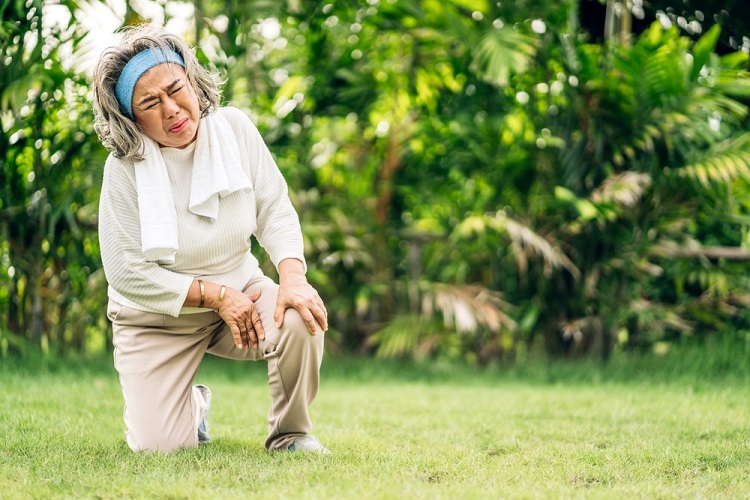Suffering From Tendonitis? Try These Natural Treatments
Tendonitis is caused by painful inflammation in the tendons, which are the chord-like structures in the body that connect muscles to bones. Tendonitis, which is frequently brought on by repeated motions (such as those involved in exercise or prolonged periods of sitting still), injuries, or chronic inflammation, can cause a lot of discomfort.

The Signs And Symptoms Of Tendonitis
The duration of tendonitis symptoms might vary; some cases go away in a few weeks while others persist for several months or more. The extent of your injury, how long it has persisted, and how much inflammation has set in will determine how long it takes to heal. The sooner you address the issue, get some rest, and seek therapy, the faster you should be able to see your symptoms subdue.
There are several common symptoms of tendonitis, including:
– swelling and soreness near a certain ligament, joint, or muscle
– stiffness and increased pain when moving or exercising
– pain that keeps you from sleeping

Common Causes
Tendonitis can develop as a result of routine activities like typing, cleaning, running, or participating in sports because repeated movement is one of the most common causes of tendonitis. Even though an injury might initiate the development of tendonitis, the problem is typically brought on by a person’s profession or hobbies. This is particularly true when someone starts these activities abruptly (as with an exercise schedule, for instance) and engages in excessive activity too quickly.
The following are just a few of the numerous activities that might result in tendonitis:
- Running
- Having poor posture while sitting at a desk
- Dancing
- Basketball
- Cycling
- Not stretching after HIIT exercises and other sprints (particularly if you haven’t warmed up or had enough rest)
- Gardening
- Golf
- Spending several hours each day using your hands (including carpentry, cleaning, shoveling, etc.)
- Skiing
But before you think otherwise, exercising and being active are still recommended despite the possibility of tendonitis. The tendons can also experience additional stress from pre-existing medical illnesses such as rheumatoid arthritis, gout, thyroid problems, infections, and responses to specific drugs.
Our bodies have hundreds of tendons, but only a few particular ones seem to be the primary culprits of tendonitis cases. The reason for this is that these tendons may not receive as much blood flow as our other tendons. Therefore, it is crucial to reduce body-wide inflammation, high blood pressure levels, and poor blood supply to the tendons, which can all lead to tissue damage and inflammation.
If you’re experiencing tendonitis, let’s have a look at some natural treatments.

Rest And Take A Break From Exercise
When recovering from tendonitis, a little more self-care can really help. Try to give yourself enough time to heal so you can observe the reduction of discomfort and swelling. Discuss what this time frame might entail for you specifically with your doctor. Then, as your pain permits, try to gradually resume exercising. Just be sure to keep things low-intensity for a time, stretch often, and take breaks when necessary.
If you do decide to be active in some fashion, make sure to stay away from any activities that make your pain worse. If you keep exercising in a way that strains your tendons, you will simply do more harm and ultimately extend the time it will take to resolve the problem.

Eat Anti-Inflammatory Foods
Inflammation merely serves to worsen conditions, as it does with almost all wounds and even chronic illnesses. The foods you consume can have a significant impact on your body’s overall levels of inflammation; some can speed up your recovery and help you avoid injuries, while others can cause swelling and cause a delay in healing.
To follow an anti-inflammatory diet, you should eat the following foods:
-All vegetables, especially green leafy kinds like kale
-Berries
-Bananas
-Coconut water
-Wild-caught fish
-Cage-free eggs
-Grass-fed beef
-Bone broth
On the other hand, some foods may worsen tendonitis by causing more inflammation:
-Alcohol
-Caffeine
-Refined grains
-Sugar
-Fried foods

Apply Ice Packs And Wear A Brace
Another simple therapy you can attempt at home is icing sore areas to help reduce swelling. This is crucial during the first couple of days after an injury or when you start to observe swelling. Applying an ice pack to a barrier, such as a piece of clothing, a paper towel, or a dish towel, before bringing it up to the painful area can help reduce the symptoms of tendonitis.
By using a bandage, splint, or brace, for example, you can add additional support around your tendons to ensure that the injured body part doesn’t move too much. Isolating the inflamed tendon promotes the repair of the injured tissues and helps to minimize swelling.
